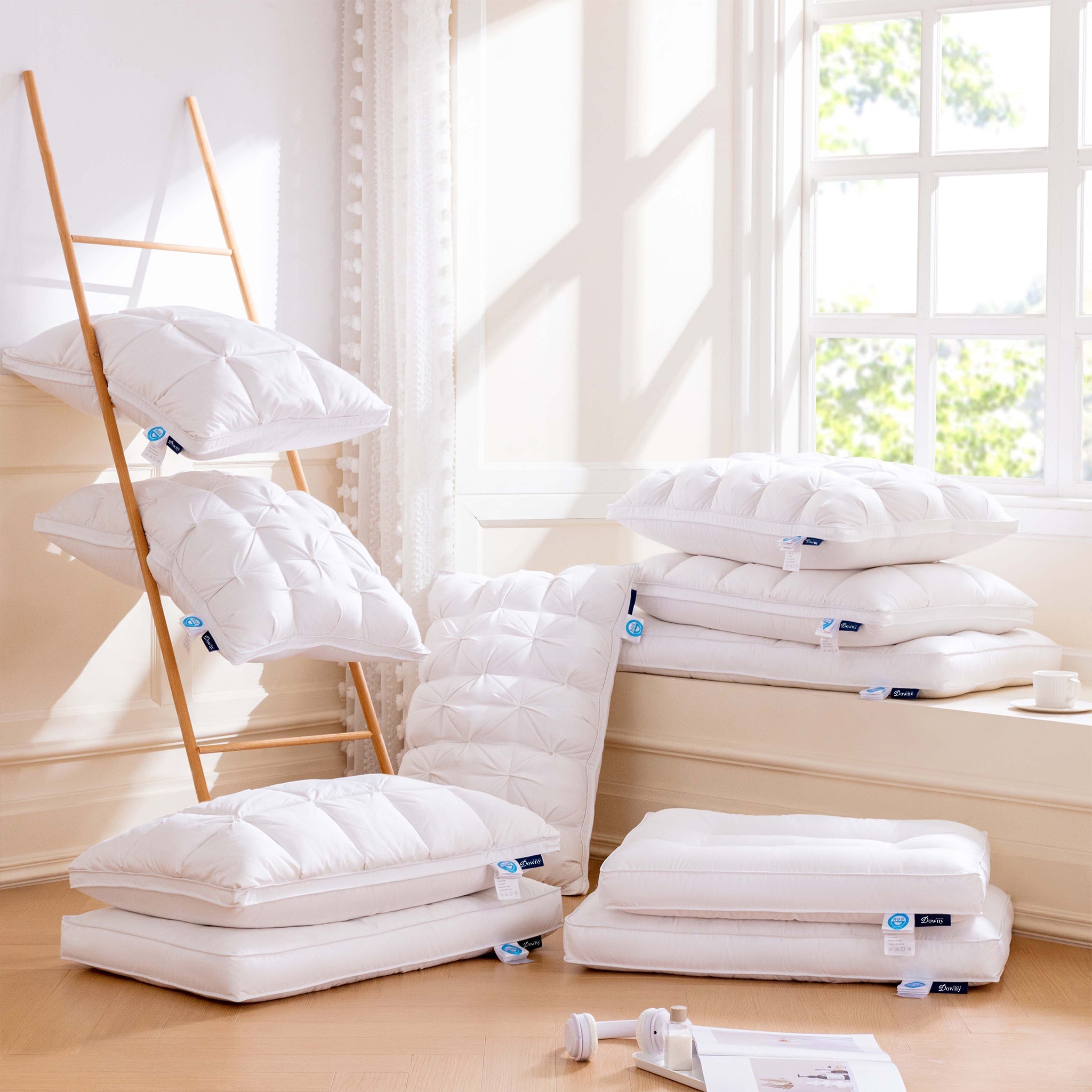It's quite annoying to see your down pillows leaking feathers everywhere, on your clothes, your face and your beddings! But there are ways to fix your leaking pillows. Of course you need to know your pillows are not entirely broken. In that case, you'd better change a new down pillow to get rid of the frustrating feather leaking issue. However, if there is only a hole or a small crack, then you can save your pillows with our following tips.
Assess the Damage
Look closely at your pillow to determine where feathers are escaping. Start by checking the pillow case for any holes, frays or weak seams that could allow feathers to poke through. Gently squeeze the pillow to see if the filling feels tightly packed or if there are gaps where feathers may be leaking out.
Pay attention to both sides and ends of the pillow. Sometimes one section becomes flattened or compressed over time, creating space for feathers to work their way out. Check the corners and piping for splits.
If you spot an obvious hole or split seam, the escaping feathers have found an exit. But a pillow that feels too soft or shows dents may also have interior gaps that allow feathers to slowly filter out. This is common with old pillows or cheap materials.
Assessing where and how feathers are escaping will allow you to determine the best solution, whether patching holes, adding a protector or replacing the pillow.
Patch Holes and Repair Seams
One of the best ways to stop feathers from escaping through holes or open seams in your pillow case is to simply patch up any damaged areas. This can be done fairly easily at home with basic sewing skills or supplies.
Look closely at the pillow case and identify any small holes, tears, or seams that have come undone where feathers may be escaping. Once you've located the problem areas, you have a few options for repairing:
-
Iron-on patches - Purchase iron-on fabric patches that match or coordinate with your pillow case material. Follow the instructions to iron them over the holes or damaged seams. The heat will activate the adhesive and seal up the open areas.
-
Sewing - Hand sewing with a needle and thread or using a sewing machine can neatly stitch closed any holes, tears or seams. Try to match the existing stitching and be sure to knot securely so the stitches don't come undone.
-
Fabric glue - For very small holes or temporary repairs, you can simply apply a small amount of clear drying fabric glue. Spread it smoothly over the hole or seam and allow to fully dry before placing the pillow back on the case. The glue will harden and fill in the open space.
Taking the time to patch or mend any visibly damaged areas on the pillow case will go a long way towards preventing feathers from continuously escaping through openings in the fabric.
Add a Pillow Protector
Putting your pillow inside a zippered protector case is an easy way to prevent feathers from escaping through small holes or damaged seams in the pillow itself. Look for pillow protectors made from hypoallergenic and waterproof materials.
The barrier of a protector case will keep feathers contained inside the pillow. The protector will also prevent allergens like dust mites, mold, and pet dander from getting into the pillow. Waterproof materials like vinyl or polyurethane will protect the pillow from moisture damage as well.
Make sure to choose a pillow protector that is form fitting and zips closed entirely. This will keep the pillow encased snugly and ensure feathers cannot sneak out. It's a good idea to get a protector with a zipper made to withstand frequent use and washing cycles without breaking or wearing out over time.
Using a quality pillow protector helps extend the lifespan of your pillow by protecting it from wear, stains, dust, and moisture. It's an affordable way to get more use out of your existing pillow before needing to replace it. The barrier also helps contain allergy triggers for a more comfortable night's sleep.
Plump and Reshape
Fluffing and reshaping your pillows daily can help reduce feather loss. When a pillow is flattened, the filling inside gets compressed. Fluffing plumps the pillow back up, allowing the filling to loft and expand again. This helps redistribute the feathers so there are fewer thin, worn spots.
To plump your pillows:
-
Grasp the pillow firmly and punch down into the middle of the filling. Squish and massage the pillow to break up any lumps or compressed areas.
-
Gently shake and squeeze the pillow to fluff it up. Reshape it into a smooth, filled-out form.
-
Use your hands to lightly pat and smooth the pillow. Sculpt it back into its original shape.
-
Stand the pillow upright and allow the filling to settle before putting the pillowcase back on.
Doing this daily refresh helps maintain the loft and shape of the pillow. It prevents the filling from becoming overly compressed and worn in certain spots. Redistributing the feathers reduces the chances of them poking through thin fabric.
Conclusion
With our complete guide, you now should know exactly how to prevent your feathers coming out of your pillows. But always make sure you shop the quality down pillow at the first step. That's what Downyhaven always believe, to make better pillows for you and your family.


